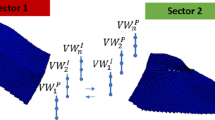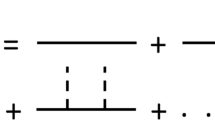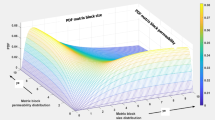Abstract
The determination of optimum well locations and number of wells needed during green field development always comes with unprecedented challenges because of the geological uncertainty, and the non-linear relationship between the input and output variables associated with real reservoirs. These variables are key sources affecting the viability and validity of the results. Reservoir simulation is one of the least uncertain and most reliable prediction tools for dynamic performance of any reservoir. As field development progresses, more information becomes available, enabling us to continually update and, if needed, correct the reservoir description. The simulator can then be used to perform a variety of exercises or scenarios, with the goal of optimizing field development and operation strategies. Optimizing well numbers or locations under such geological uncertainty is achieved by using a reservoir simulator under several geological realizations, and these require multiple reservoir simulations to estimate the field performance for a given well configuration at a given location. Using reservoir simulation becomes impractical when dealing with real field cases incorporating multi-million cells because of the associated CPU demand constraints (Bouzarkouna et al. 2011). For instance, to determine the optimum well locations in a giant field that will result in the most efficient production rate scenario, one requires a large number of simulation runs for different realizations and well configurations. A large amount of runs is technically difficult to achieve even if we have access to super computers. The fast marching method (FMM), which is based on a solution of Eikonal equation, can be used to find the optimum well locations in a green oil field by tracking the pressure distribution in the reservoir. The FMM will enable us to calculate the radius of investigation or pressure front as a function of time without running any simulation and with a high degree of accuracy under primary depletion conditions. The main purpose of this paper is to study the effect of mobility on FMM and extend the investigation of its validity to include two-phase flow and convection-dominated flow and evaluate the ability of the methodology to predict the dynamic performance of the reservoir during pseudo-steady-state flow regime.
Similar content being viewed by others
References
Bouzarkouna, Z., Auger, A., Ding, D.Y.: Local-meta-model CMA-ES for partially separable functions. In: Proceedings of the 13th Annual Conference on Genetic and Evolutionary Computation (GECCO) (2011)
Esmaiel, T.E.: Applications of experimental design in reservoir management of smart wells. SPE 94838 (2005)
Spokes, J.J., Ovuede, M.A., Ginger, E.P., Narahara, G.M., Haga, O., Gontijo, J.: Application of experimental design in selecting a development plan for the Agbami field. Offshore Technology Conference. OTC 16994 (2004)
Uvieghara, T., Lawal, K.A., Effiom, O.: Application of experimental design for improved reservoir-characterization by pressure-transient analysis. SPE 167566 (2013)
Novakovic, D., Roth, J.: Uncertainty analysis in a mature field: Dibi Field case study (2011)
Dogru, S.: Selection of optimal platform locations. SPE 10754 (1987)
Beckner, B.L., Song, X.: Field development planning using simulated annealing - optimal economic well scheduling and placement. Society of Petroleum Engineers (1995). https://doi.org/10.2118/30650-MS
Norrena K.P., Deutsch C.V.: Automatic determination of well placement subject to geostatistical and economic constraints. In: Proceedings of the 2002 SPE International Thermal Operations and Heavy Oil Symposium and International Horizontal Well Technology Conference. Calgary, Canada, SPE 78996 (2002)
Seifert, G., Porezag, D., Frauenheim, T.: Calculations of molecules, clusters, and solids with a simplified LCAO-DFT-LDA scheme. Int. J. Quantum Chem. 58, 185 (1996)
Bittencourt, A.C., Horne, R.N.: Reservoir development and design optimization. Paper SPE 38895 presented at the SPE Annual Technical Conference and Exhibition. San Antonio, TX, October 5-8 (1997)
Guyaguler, B., Horne, R.N., Rogers, L., Rosenzweig, J.J.: Optimization of well placement in a Gulf of Mexico Waterflooding project. Presented in the SPE Annual Technical Conference and Exhibition, SPE 63221 (2000)
Yeten, B., Durlofsky, L.J., Aziz, K.: Optimization of non-conventional well type, location and trajectory. SPE J. 8, 200–210 (2003)
Handels, M., Zandvliet, M., Brouwer, R., Jansen, J.D.: Adjoint-based well- placement optimization under production constraints. Society of Petroleum Engineers (2007). https://doi.org/10.2118/105797-MS
Sarma, P., Chen, W.H.: Applications of optimal control theory for efficient production optimisation of realistic reservoirs. International Petroleum Technology Conference (2008). https://doi.org/10.2523/IPTC-12480-MS
Forouzanfar, F., Li, G., Reynolds, A.C.: A two-stage well placement optimization method based on adjoint gradient. The Presented in SPE Annual Technical Conference and Exhibition, SPE 135304 (2010)
Badru, O., Kabir, C.S.: Well placement optimization in field development. SPE 84191 (2003)
Ozdogan, U., Horne, R.N.: Optimization of well placement under time-dependent uncertainty. SPE 90091 (2006)
Santana, R.: Production Optimization by Solving the Well Location Problem. Presented in the Offshore Technology Conference OTC 22954, Houston, TX (2012)
Douglas, J. Jr, Pereira, F., Yeh, L.M.: A parallelizable method for two-phase flows in naturally-fractured reservoirs. Comput. Geosci. 1, 333–368 (1997)
Wang, Y., Kovscek, A.R.: Streamline approach for history matching production data. SPE 58350 (2000)
Thiele, M.R., Batycky, R.P.: Streamline simulation: a technology update. J. Petrol. Tech. 53(5), 26–27 (2001)
Sharifi, M., Kelkar, M., Bahar, A., Slettebo, T.: Dynamic ranking of multiple realizations by use of the fast-marching method. Society of Petroleum Engineers (2014). https://doi.org/10.2118/169900-PA
Yin, J., Xie, J., Datta-Gupta, A., Hill, A.D.: Improved characterization and performance assessment of shale gas wells by integrating stimulated reservoir volume and production data. SPE 148969 (2011)
Datta-Gupta, A., Xie, J., Gupta, N.: Radius of investigation and its generalization to unconventional reservoirs. J. Petrol. Tech. 63(7), 52–55 (2011)
Xie, J., Gupta, N., King, M.J.: Depth of investigation and depletion behavior in unconventional reservoirs using fast marching methods. Presented in SPE europec/EAGE Annual Conference. copenhagen, Denmark, SPE 154532 (2012)
Zhang, Y., Yang, C., King, M.J., Datta-Gupta, A.: Fast-marching methods for complex grids and anisotropic permeabilities: application to unconventional reservoirs. Society of Petroleum Engineers (2013). https://doi.org/10.2118/163637-MS
Funding
The authors would like to thank Saudi Aramco for supporting and funding this research at the University of Tulsa and many others for their contributions toward the project.
Author information
Authors and Affiliations
Corresponding author
Appendices
Appendix 1. Solution of diffusivity equation in terms of Darcy flux
We approximate the transient flow as a series of pseudo-steady-state flows and use the approximation to derive the bottomhole flowing pressure equation, in which the drainage volumes are obtained from FMM.
The general form of the governing diffusivity equation for radial flow is normally written as
where pressure is the dependent variable. To obtain the Darcy flux expression, we change the dependent variable in Eq. 13 to rate instead of pressure. The rate at any point in the reservoir is, according to Darcy’s law
Rearranging Eq. 14 yields
Substituting Eq. 15 into Eq. 13 yields
For a reservoir with constant thickness, Eq. 15 becomes
Differentiating Eq. 17 with respect to r yields
Rearranging Eq. 18 yields
Differentiating Eq. 19 with respect to t yields
Rearranging Eq. 20 yields
Substituting Eqs. 19 and 21 into Eq. 18 yields
For homogeneous reservoir, the porosity (φ) and permeability (k) are constant, and Eq. 22 simplifies to
Expanding the LHS of Eq. 23 yields
We define the diffusivity constant as
Substituting Eq. 25 into Eq. 26 yields
Equation 26 may be solved using the following initial and boundary conditions:
We define the following dimensionless variables
Rearranging and differentiating the above dimensionless variables yields
Substituting the derivative of the dimensionless variables into Eq. 26 yields
And the initial and boundary conditions become
We use the following Boltzmann transform and utilize the dimensionless variables
Differentiating the Boltzmann transform and using chain rule yields
From the equation set in Eq. 35, we get
and
Substituting Eqs. 37 and 38 into Eq. 30 yields
Simplifying Eq. 38 yields
The boundary conditions become
The general solution of the homogenous Eq. 40 is
Applying the boundary conditions to find c1 and c2 yields
and
Substituting \(q_{D} =\frac {q}{q_{w} }\) into Eq. 43 yields
Substituting \(r_{D} =\frac {r}{r_{w} }\) into \(\frac {1}{4}\alpha \frac {\left ({r_{w} r_{D} } \right )^{2}}{2}\) and simplifying it yield
Substituting Eq. 46 into Eq. 45 yields
From the definition of radius of investigation (rinv)
By definition, the diffusive time of flight (τ) is
where c = 4 for radial flow
Substituting Eq. 46 into Eq. 45 yields
Substituting Eq. 49 into Eq. 47 yields
Simplifying Eq. 51 yields
Using the following equation:
The approximation of transient flow to a pseudo-steadystate (PSS) flow leads to
Substituting Eq. 53 into Eq. 52 yields
From Eq. 54, we get
Substituting Eq. 51 into Eq. 55 yields
Taking the integral of Eq. 57 yields
Note that Vp(t) is taken outside the integral since q is calculated at a fixed time. Thus, Vp(t) is fixed. From Eq. 57, we get
Substituting Eq. 58 into Eq. 56 yields
If we assume a constant rate instead of a pressure drop, Eq. 59 becomes
Solving for the pressure drop and then rearranging, we get
For bottomhole flowing pressure, Eq. 61 can be written as
Equation 62 represents the base of our bottomhole flowing pressure calculation, utilizing the drainage radius and volume data obtained from the FMM. This process, beginning with the FMM, can be used to estimate the cumulative oil production.
Appendix 2. Two-dimensional and Gullfaks model
Rights and permissions
About this article
Cite this article
Al-Qasim, A., Kelkar, M. Effect of mobility and convection-dominated flow on evaluation of reservoir dynamic performance by fast marching method. Comput Geosci 22, 1059–1082 (2018). https://doi.org/10.1007/s10596-018-9738-4
Received:
Accepted:
Published:
Issue Date:
DOI: https://doi.org/10.1007/s10596-018-9738-4




